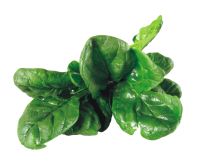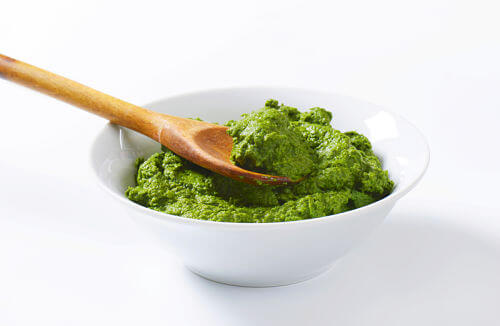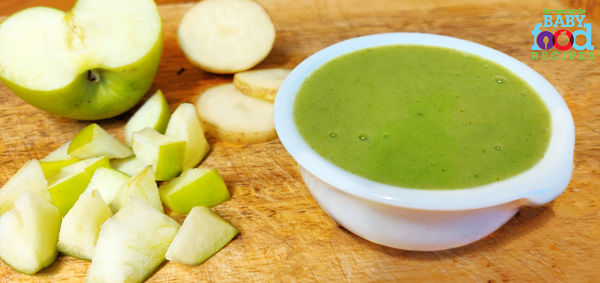Spinach Baby Food Recipes, Ideas and Information
Updated: Aug 25, 2023
Welcome to our Spinach Baby Food Recipes section, where we look at how and when to introduce spinach to your baby and explain why spinach may not be the best choice for your little one as an early weaning food.
Spinach nutrition facts
Spinach contains a broad range of nutrients including
- vitamins A, B2, C, E and K
- minerals including manganese, magnesium, potassium, zinc and selenium
- folates
- protein
- Omega 3 fatty acids
- iron
- calcium

It also has powerful antioxidant properties and can help protect the body against various types of cancer.
What’s more, consuming spinach is believed to help lower blood pressure and guard against age-related brain decline in later life.
BUT…
The calcium and iron in spinach are NOT well absorbed by the human body.
This means that spinach may not be NOT the best source of these nutrients for your baby, even though the levels of iron and calcium it contains are quite high.
The problem is caused by the oxalates in spinach, which bind to the iron and calcium, inhibiting their absorption by the body.
Could spinach REALLY have given Popeye his powers?
Those of us who grew up watching the spinach-guzzling sailor on TV couldn’t help but believe that spinach was a wonderful, iron-rich food that would give us amazing strength and power!
The truth, however, is that the wonders of spinach portrayed in the cartoon were based on statistics published back in 1870, which were based on poor scientific research, and very inaccurate.
To boost his iron levels, Popeye may have done better eating red meat, chicken or even tuna, from which the iron is much more easily absorbed!
When can I introduce spinach to my baby?
You should – of course – speak to your doctor before introducing spinach to your baby.
However, most sources will suggest waiting until your little one is at least 10 months of age to introduce spinach.
In part, this is due to the fact that spinach may be high in nitrates, which may intensify during storage and subsequent reheating.
The American Academy of Pediatrics states in its article Infant Methemoglobinemia: The Role of Dietary Nitrate in Food and Water that homemade spinach baby food should not be given before 3 months of age, which they acknowledge is earlier than solids need to be introduced anyway!
But – if you’re still concerned about nitrate levels in spinach – you can further minimize the risk by discarding any water in which you cook the leaves and preparing spinach as needed, rather than cooking it and storing it for future use.
The other reason that spinach is not commonly recommended as an early weaning food is that your baby’s body may have difficulty in absorbing the iron and calcium it contains (as mentioned in the Nutrition Facts above).
Although you can boost your baby’s absorption of the iron by serving spinach alongside foods containing vitamin C, it is far better to look for alternative food sources to ensure that your baby receives sufficient amounts of these vital nutrients.
There is also some research to suggest that the oxalates in spinach may even inhibit your baby’s absorption of calcium from his milk, if the two are served together.
Spinach, therefore, should not be given to your baby on an overly frequent basis once it’s introduced – and, when offering spinach to your baby for the first time – remember to follow the four day rule and watch carefully for any sign of allergic reaction or digestive discomfort.
Choosing and storing spinach
Spinach, which is related to chard and beets, is separated into three main types –
- Flat leaf or smooth leaf, which tends to be frozen, canned, or used in processed foods
- Savoy, which is dark green in colour and has curly leaves
- Semi-Savoy, with leaves not quite as ‘crinkly’ as Savoy
If you have the option, then pick semi-Savoy over Savoy, because the leaves are easier to clean!
Look for spinach bunches that have tender, fresh, vivid green leaves – if the leaves are yellowing, then they are old and subsequently less nutritious.
We recommend that you choose organic spinach for use in your baby food recipes.
Conventionally grown spinach now ranks #2 on the Environmental Working Group’s ‘Dirty Dozen’ – the fruits and veggies most likely to be high in pesticide residues.
Keep your spinach in a plastic bag in the refrigerator crisper, where it should last for around 4 days (although it’s advisable to use it as quickly as possible to make the most of its nutrients).
Don’t wash it before you store it, as this will make it deteriorate more quickly.
How to prepare spinach for your baby food recipes
Spinach needs to be washed VERY carefully – even if you buy it pre-packed in a bag that states its ‘washed and ready to eat’.
Many of us will clearly remember the huge 2006 recall of spinach in the US connected to an outbreak of E.coli, during which several people died.
Since then, safety standards have been tightened considerably and spinach samples are now tested before reaching the consumer in order to prevent such a catastrophe from occurring again.
Still, thorough washing of all vegetables and fruits is always a good idea!
The best way to wash fresh spinach...
Is to completely submerge the leaves in a bowl of water and use your hands to ‘swish’ them around, dislodging any dirt.
Then you should drain the leaves and refill the bowl with fresh water, repeating the process until the water in the bowl looks clear.
To cook spinach for your baby…
- Trim off the roots and chop up any thick stems (so that the leaves and the stems cook evenly).
You can chop the leaves now if you want to, or cook them whole and chop them afterwards. - Place the leaves in a cooking pot, but don’t add any cooking water – the spinach will cook adequately in the water left clinging to the leaves from the washing process.
- Cover the pot and cook until the leaves are wilted and still have a bright colour – this should only take a few minutes.
- Chop well (if you haven’t already), puree in a blender and serve.
Spinach baby food ideas
- Add chopped spinach to meat or vegetable lasagna
- Puree cooked spinach with a little olive oil and fresh garlic, then top with grated Parmesan
- Puree with cooked peas and pears – yummy and sweet!
- Stir chopped spinach into vegetable soups
- Mix finely chopped cooked spinach with cream cheese to make a simple spread or dip
Spinach baby food recipes – 10 months+
Baby’s Creamy Spinach Puree
spinach
breast milk/formula
pinch of dried nutmeg
- Simply cook the desired amount of spinach following the directions above.
- Add a little milk and nutmeg to the spinach before pureeing.
Sweet Potato and Spinach Fritters
1 bag of baby spinach leaves
2 sweet potatoes
2 spring onions (scallions/green onions)
3 eggs*
2 tbsp fresh parsley, chopped
3 to 6 tbsp flour
2 tbsp olive oil
*Some parents prefer to delay using egg white in their baby food recipes until at least 12 months of age.
- Wash the spinach leaves and place them in a saucepan. Steam gently until tender, then cool and chop.
- Peel the sweet potatoes, then grate them. Mix the grated sweet potato with the spinach.
- Trim the spring onions and chop finely. Add the spring onions, parsley and eggs to the veggies. Add enough flour to form a fairly thick batter.
- Grease a baking tray with olive oil and spoon the batter on to the tray (around 2 tbsp per fritter).
- Bake at 375 deg F (180 deg C) until golden, turning after the first 10 minutes.
Sweet Potato, Spinach and Tomato Curry
The tomatoes in this recipe contain vitamin C, which will help your little one absorb a little more iron from the spinach.
1 small onion
pinch each of the following:
ground coriander
ground cumin
ground turmeric
chili powder (optional – but some babies love it!)
1 garlic clove, crushed
1 tsp fresh ginger, peeled and finely grated
2 tbsp olive oil
8 oz (1 cup) sweet potato, peeled and diced
2 ripe tomatoes, quartered.
2 oz (around 1 1/2 cups) spinach leaves, chopped
4 fl oz (1/2 cup) water
*Some parents prefer to delay using egg white in their baby food recipes until at least 12 months of age.
- Saute the onion in the oil until tender, then stir in the spices, garlic and ginger. Cook gently for 5 mins,
- stirring often.
- Stir in the sweet potato dice, tomatoes and water.
- Bring to the boil, then lower the heat and simmer gently until the potato is tender and the tomatoes are very ‘mushy’ (around 15 mins).
- Stir in the chopped spinach, remove from the heat and allow to sit for 5 mins so that the spinach ‘wilts’.
- Cool and serve with rice.
from our blog…
More Useful Tips and Ideas…
Tips for introducing meat to baby



